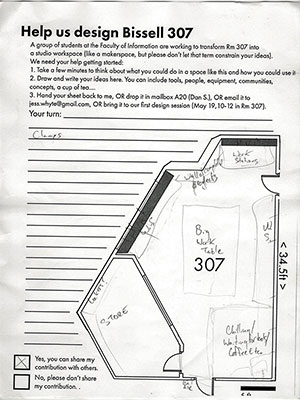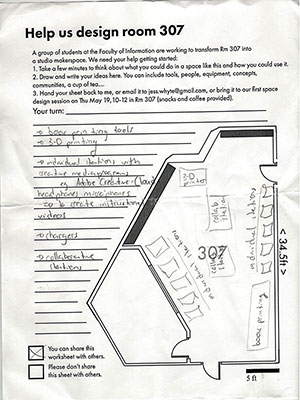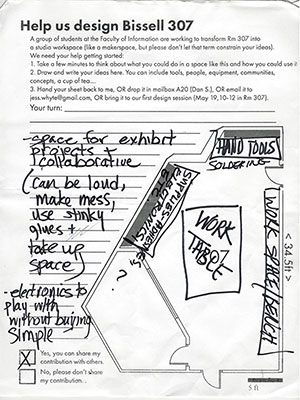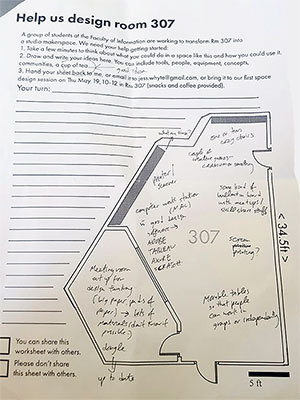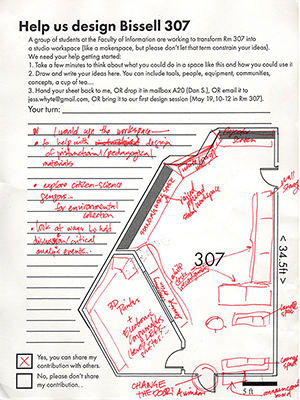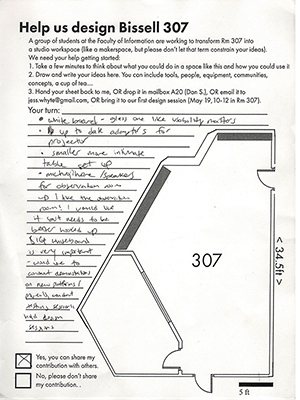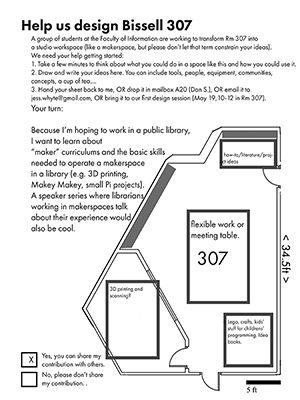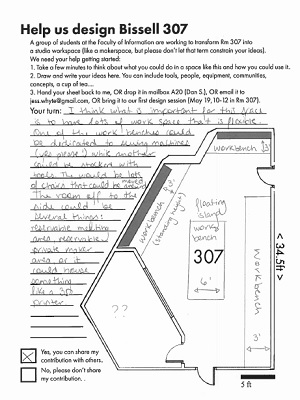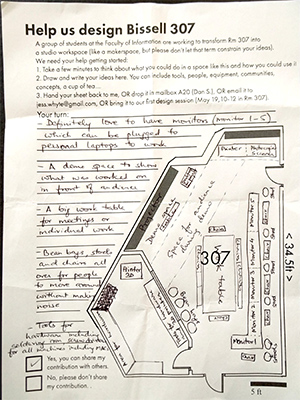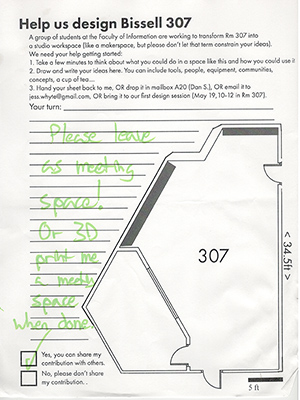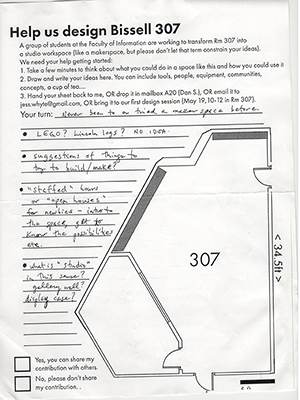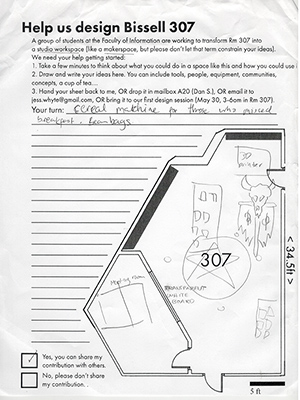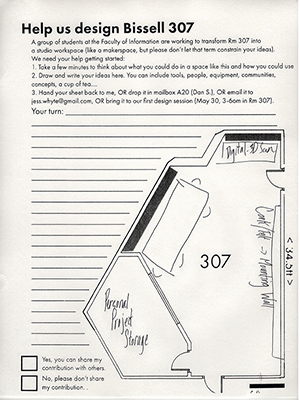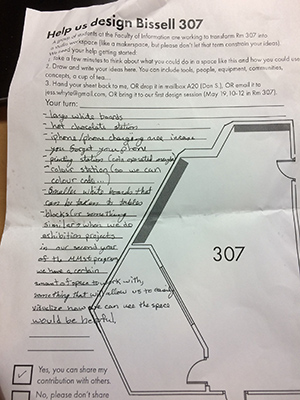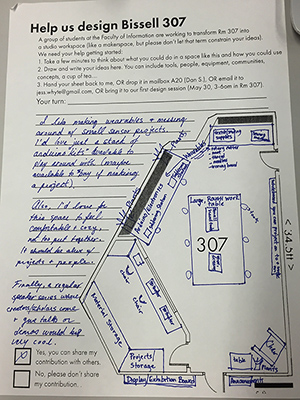Semaphore Studio307
Open Hours for Winter 2018:
Mon: 12-5
Tue: 12-5
Wed: 12-5
*Check our Calendar for updates on our Open Hours, programming, and reservations.
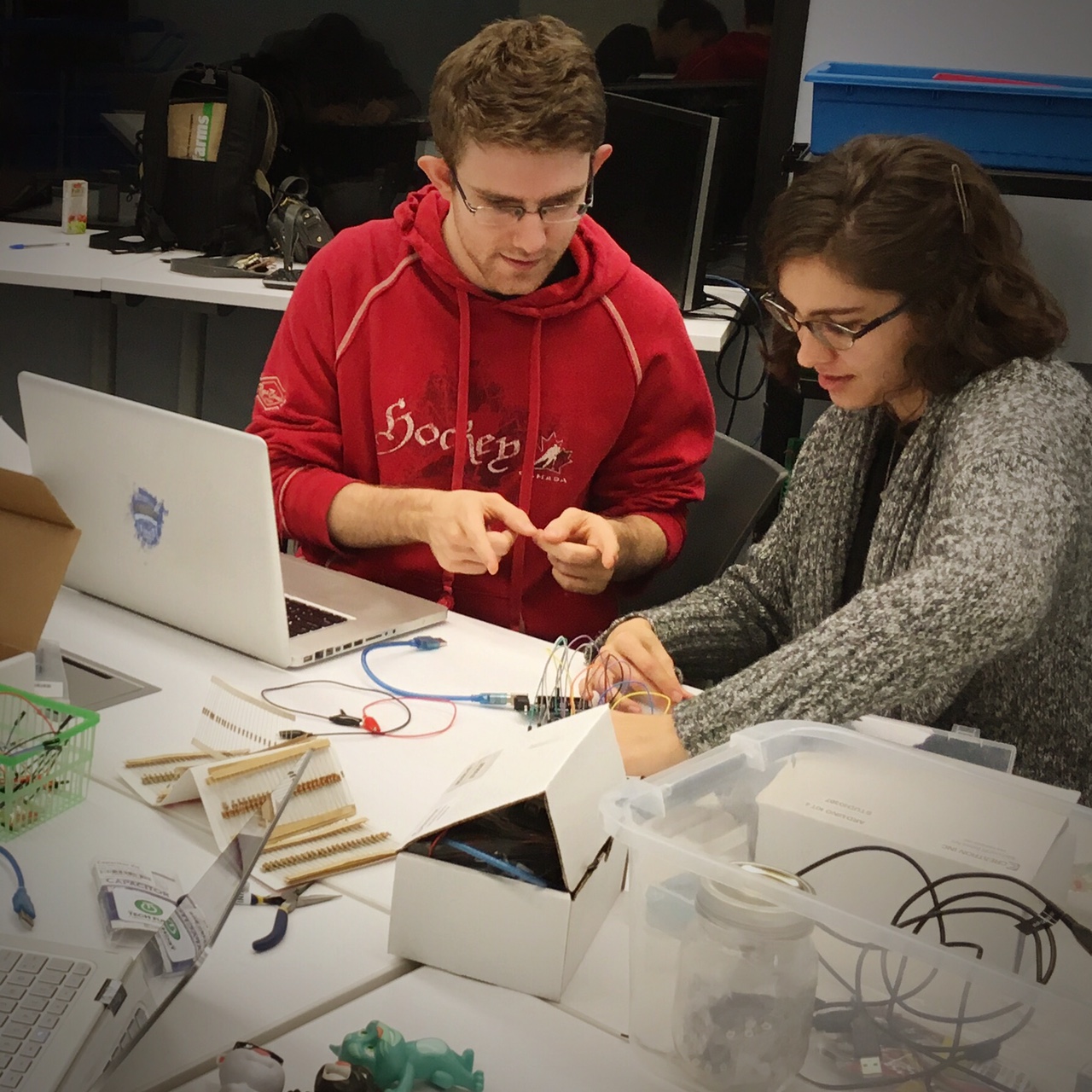
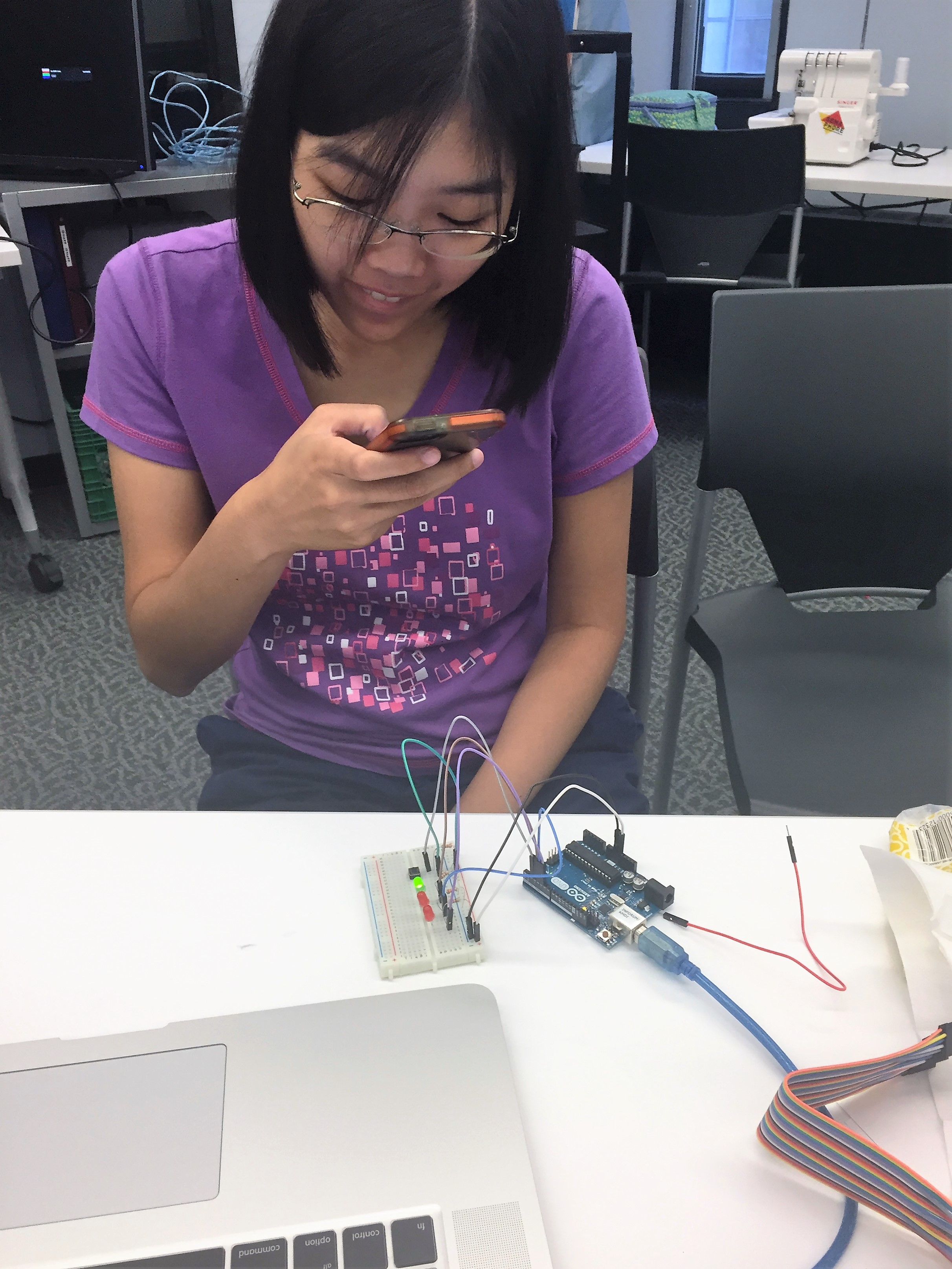
About 307
Semaphore Studio 307 was initially proposed as an extension of the Semaphore Research Cluster in the Faculty of Information and intended to be a more accessible, open, and hands-on version of Semaphore. Given: the number of courses in the Faculty of Information requiring or allowing material deliverables; the emphasis on participatory learning and creation as a crucial part of library programming and important skillset for future librarians; and the research interests of our students and faculty across concentrations, the absence of an accessible creative space was a problem. Semaphore Studio 307 is intended to fill that gap. This year, 2016-2017, is a pilot for the space. Funding and administrative support for Studio307 come from TechFund, Semaphore and the Faculty of Information.Goals for 307
As a result of a community consultation process (outlined below), four high level goals were identified for Studio307:- This is a noisy space
- This is a creating space
- This is a dynamic space
- This is a welcoming space
Consultation process and worksheets
In designing the consultation process, we took inspiration from Nancy Fried Foster and Susan Gibbons’ methods when they undertook a massive renovation of the library at the University of Rochester (2007). While their research spanned two years and a range of methods from day-mapping to photo-surveys, we borrowed two that were fitting for this particular project and feasible to complete in our time window: draw-and-write responses and design sessions.To start the process, students were asked to complete community consultation worksheets that involved both drawing and writing about their ideal space (examples below).
The second stage of this process involved a design workshop. Eleven people participated in the workshop. The workshop began with individual analysis of the submitted consultation worksheets to seek out common elements or themes. This was followed by small group analysis where participants were encouraged to discuss their individual interpretations. Finally, there was a large group discussion as a way of creating a composite based on our findings from the worksheets.
Based on our individual and group analysis of the worksheets, we came away with the four major principles or goals listed above.
The following are a collection of worksheets filled out by students and staff as part of this initial community consultation planning.
If you'd like to fill out your own version, you can find blank copies of this worksheet here. They can be submitted by emailing semaphorestudio307@gmail.com or pushing to this repository.
Images are links to pdf files.
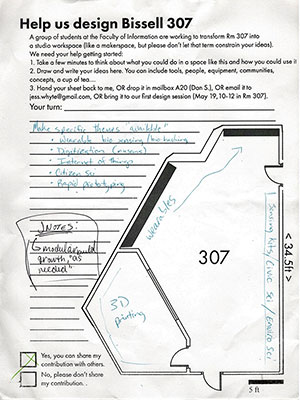
The about us stuff that's on every page....
Studio307 is a student-run studio workspace within the Faculty of Information at the University of Toronto. It's located in Rm 307 of the Claude T. Bissell Building (140 St. George Street) and supported by Semaphore, TechFund, the Inforum and student volunteers and staff.
- See a list of available equipment
- Find out how to get involved
- Access tip sheets and tutorials
- Learn about the space and its creation
- Email us at semaphorestudio307@gmail.com.
